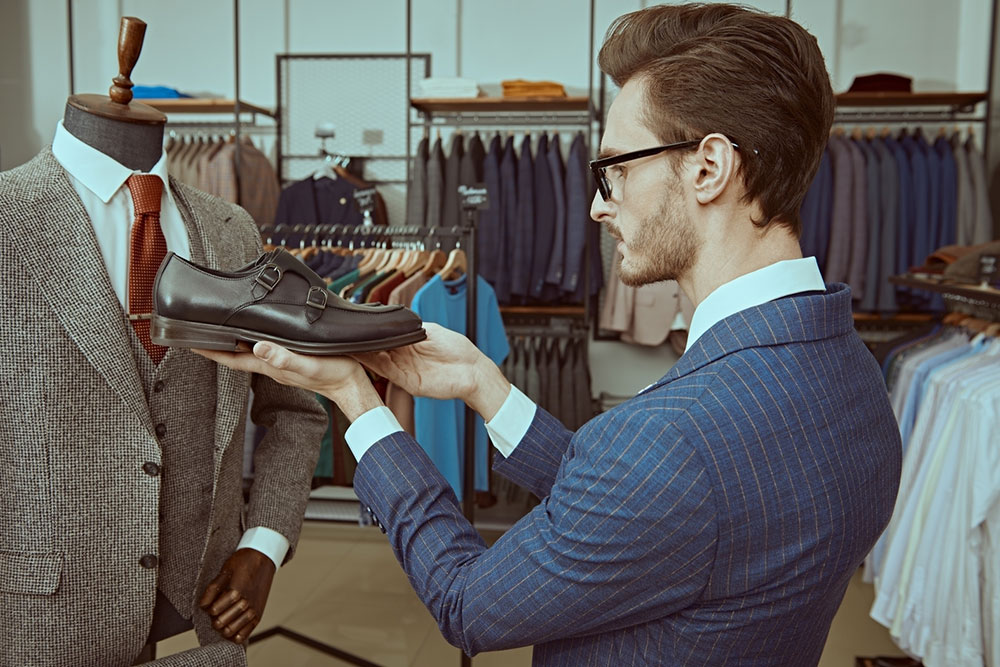9 mistakes to avoid when caring for expensive shoes

It’s not uncommon for people to be drawn towards expensive shoes, especially branded ones. However, owning a pair of pricey shoes comes with a responsibility to take proper care of them. Unfortunately, many individuals who invest in such footwear often make mistakes when it comes to wearing or maintaining them, which can lead to the shoes wearing out quickly. To help, here are nine things one must avoid while caring for expensive shoes.
Not preparing shoes for storage
When someone is done wearing the shoes, they may put them away without preparing them for storage. The individual needs to account for a few things, especially if they are storing it long term, including sorting the shoes into similar groupings. They must follow this by thoroughly cleaning the surface of the shoes and removing the laces. One should condition and polish leather shoes to prevent them from getting brittle and cracking during storage.
Neglecting the proper storage container
Another error is neglecting the use of an ideal storage container. Various options might work for each unique situation. An original shoe box is the cheapest option and may also stack uniformly. Even labeling makes it easy to find the shoes at a later time. Another option is stackable plastic boxes that are sturdy and could stack high. The clear material also lets one see the shoes in each box. One could also try inexpensive shoe organizers that can be purchased and fit as per the individual’s needs for size and space. The organizer makes shoes easily accessible if placed in the bedroom or closet.
Wearing the same shoes daily
One may love wearing the same pair of shoes every day. However, they should note that some textures, like leather, are neutral, living materials. Therefore, moisture due to heat may compromise its quality if the shoe is always worn. One could extend lifespan by letting the shoe breathe. They could do this by alternating between a few pairs to rest on shoe trees. These are like clothes hangers but for shoes with advantages like allowing moisture caused by heat and sweat to dry out, keeping the shoe in shape, and preventing the formation of creases.
Wearing the same shoes for every occasion
Each shoe has a definitive purpose. For instance, a leather shoe might be suitable for work and formal events, and a pair of canvas shoes is suitable for a casual setting, while sports shoes are suited for running and walking. But one cannot expect to wear a pair of running shoes for a hike, as the terrain might result in the shoes being ripped open and damaged beyond repair. And this could cost someone a lot of money if the shoes are expensive.
Failing to follow a shoe care routine
People have ruined some of the most expensive shoes because they failed to follow a shoe care routine. The best way to care for a pair of shoes is to speak to a shop assistant to help pick the right products for the footwear. One must also read the labels and follow the instructions to the tee. One must also ensure they purchase quality shoe care products as cheaper options may ruin the expensive footwear.
Washing all shoes in the washing machine
These days, people take the easy way out by dumping shoes in the washing machine to get them cleaned. This may also work on canvas, nylon, cotton, and polyester footwear. However, shoes made with suede, rubber, leather, or vinyl must not be placed in the washer. Moreover, any expensive pair should always be cleaned following the manufacturer’s guidelines to avoid ruining the material and design.
Shining leather shoes without cleaning first
Shoe polish serves two purposes – it makes shoes shine and protects them from moisture by creating a layer on the surface of the leather. However, if one polishes their shoes, especially leather shoes, without cleaning them, it can block the pores and cause the leather to crack. Therefore, cleaning such shoes with a special leather cleaning lotion every two weeks is important. This sanitizes the shoes and keeps them hydrated, preventing them from drying out.
Ignoring creases
A shoe tree may help reduce the formation of creases, but these are ultimately inevitable in leather shoes. Therefore, one should not ignore the creases to keep the shoes looking good or prevent irretrievable damage to the leather. During the show care routine, the individual must apply the cleansing solution and polish to the creases with their fingers from directly above. This will help get as much of it inside the creases as possible to promote absorption.
Being in a hurry to store them
How an individual takes off their shoes and puts them away is essential when considering shoe care and durability. One must never take the shoe off by holding down the heel of one with the toe of the other as it might damage the heel stiffener. The individual must also take time to undo the laces properly to ensure they do not enforce the upper when taking them off. Other care steps include shining shoes with a polishing mitt for maximum shine without scratching the leather and brushing the shoes gently and often in between regular cleaning and shining sessions.



